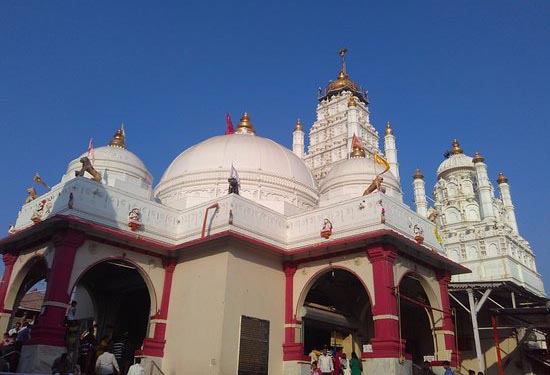Ranchhodrai Temple

Information of Ranchhodrai Temple, Dakor, Kheda, Gujarat
Ranchhodrai Temple is situated at the bank of Gomti Lake in Dakor of Gujarat. It is a key centre of religious and commercial activity. The present temple compound is set in a big rectangle setting on a high stage, in the style of primitive temples. There are four entrances which have penetrated the external walls of Ranchhodrai Temple at prime points. Several offices and stockrooms are created in the external boundary of the temple. Ranchhodrai Temple is dedicated to lord Ranchhodrai, which is a form of lord Vishnu.
Ranchhodrai Temple Religious Significance
There are five darshans in Ranchhodrai Temple namely Bal bhog, Gwal bhog, Mangla, Raj bhog and Srinagar bhog. During these darshans, aartis are performed. Although devotees can take darshan at any time when the temple is open, the timing in full moon day is quite different than usual days. The devotees can provide extra bhog to the deity of Ranchhodrai Temple and for such additional bhog they obtain Prasad. As a religious tradition, timpanists usually sit over the main entrance in a gallery of their own. They play music throughout the main darshans and during the time of aarti. All the religious procedures are done with immense importance and in a well organised way, adding more to the religious significance this temple holds.
The anatomy of lord Ranchhodrai denote lord Vishnu with four arms. He bears a conch, lotus, circle and sword of state in his hand. The lower right arm of lord Ranchhodrai hold abhaya mudra which provides protection to the devotees who surrender to him. The lord here is worshipped more as lord Krishna, i.e. younger form of mature lord Dwarka. His right hand is frequently revealed to hold a flute, which is a preferred instrument of lord Krishna. His upper right, upper left and lower left arm holds a sword of state, circle and conch respectively. During festive season, the arms of lord Ranchhodrai is encased with gloves of gold and sprinkled with gems. Furthermore lamps are also ignited in every side of the temple during festive season such as Janmasthami and Dol Purnima among others.
Ranchhodrai Temple Mythology & History
According to Hindu mythology, during the era of Mahabharata, the surrounding field of Dakor was a dense forest. It was pleasing and amusing with various watercourses and lakes. Dakor has become a key attraction for sages in order to create their hermitage for reparation. Similarly a popular sage named Dank had his ashram in this area. Throughout reparation, lord Shiv was pleased with him and requested him to ask any bliss. Consequently, Dank requested lord Shiv to stay there permanently in his ashram. Thus, lord Shiv agreed with his request and placed his replica in the form of Shiv Linga, which is also termed as Daknath Mahadev.
Gopal J. Ambekar, a Shroff of Puna was highly inspired by the legendary site of Dakor. One day he dreamt that he must construct a magnificent and large temple in that area. Therefore, Ranchhodrai Temple was constructed under his leadership. The presiding idol of lord Ranchhodrai is created by dark stone and is decorated with jewels, exclusive apparels and gold ornaments. The throne of idol of lord Ranchhodrai was gifted by Broda state.
Ranchhodrai Temple Architectural Significance
The current Ranchhodrai Temple was created in the year 1772 AD with brick walls and stone columns. It is created on high podium with 12 stone made steps on every side and is enclosed by large courtyard. Ranchhodrai Temple has 8 vaults and 24 towers and highest of them is about 90 feet tall, making the temple the tallest one in Dakor. The primary entrance of the temple overlooks the panels of Gomati Lake. The entrances of Ranchhodrai Temple is gorgeously carved and direct to the main yard. One entering the yard, there are 2 tall structures which houses thousands of lamps. The structure of Ranchhodrai Temple is very characteristic to medieval temple architectural style of Gujarat. It not just the holiness of the temple but the splendid architecture and the works of the medieval age calls devotees from across India to be the part of the temple and its religious rituals.
- Andhra Pradesh Temples
- Assam Temples
- Bihar Temples
- New Delhi Temples
- Goa Temples
- Gujarat Temples
- Jammu and Kashmir Temples
- Karnataka Temples
- Kerala Temples
- Madhya Pradesh Temples
- Maharashtra Temples
- Odisha Temples
- Punjab Temples
- Rajasthan Temples
- Sikkim Temples
- Tamil Nadu Temples
- Telangana Temples
- Uttar Pradesh Temples
- Uttarakhand Temples
- West Bengal Temples